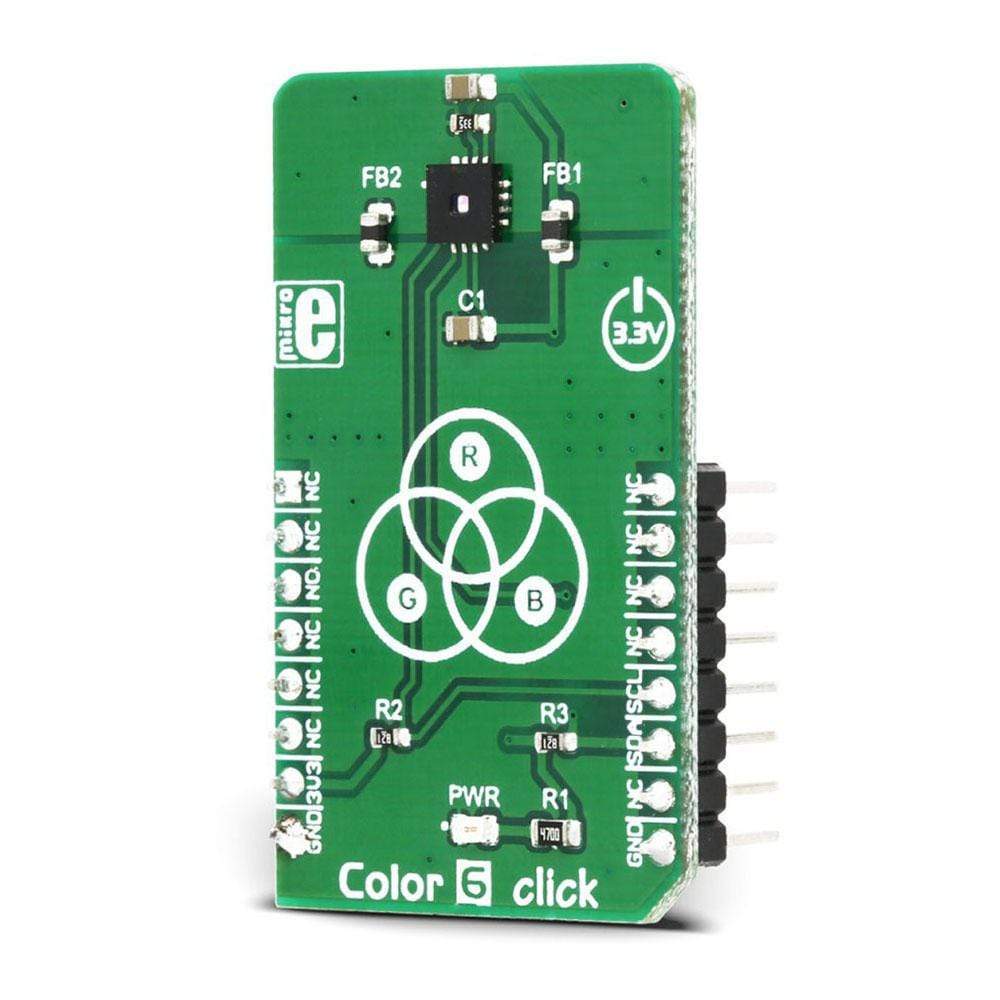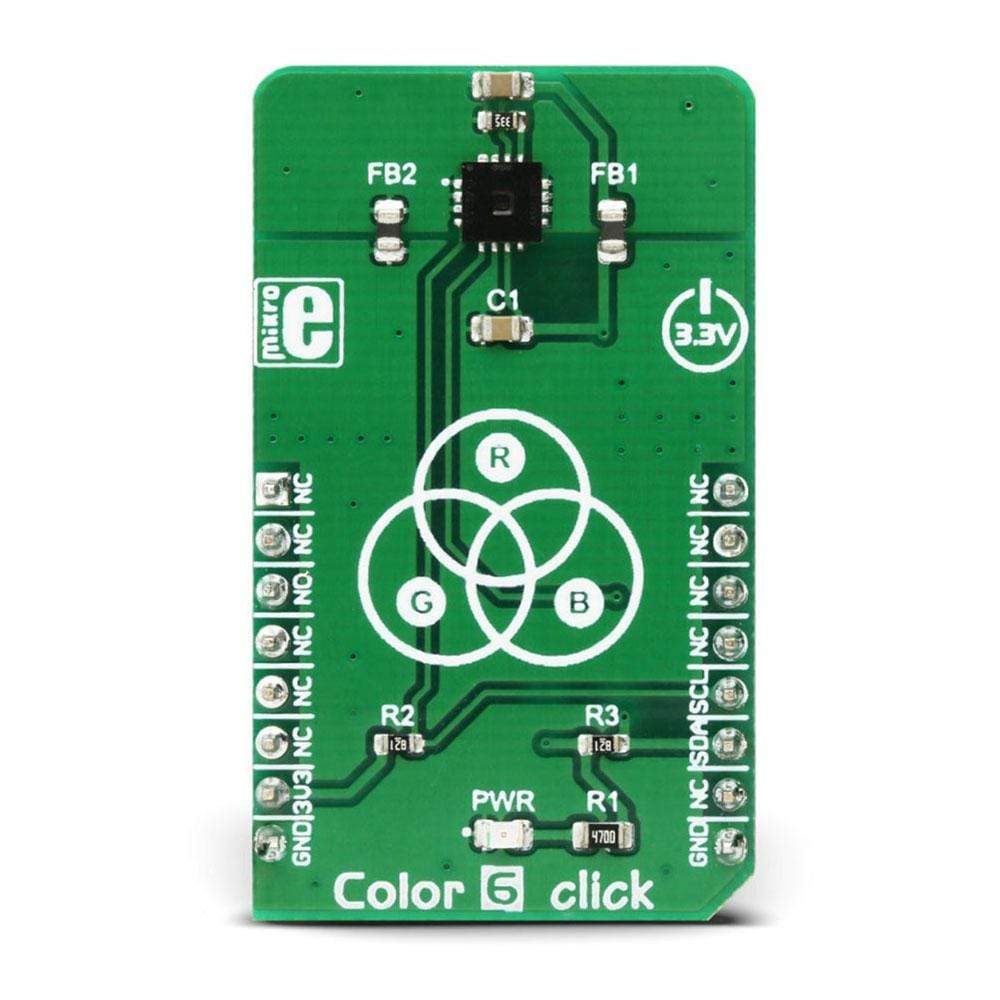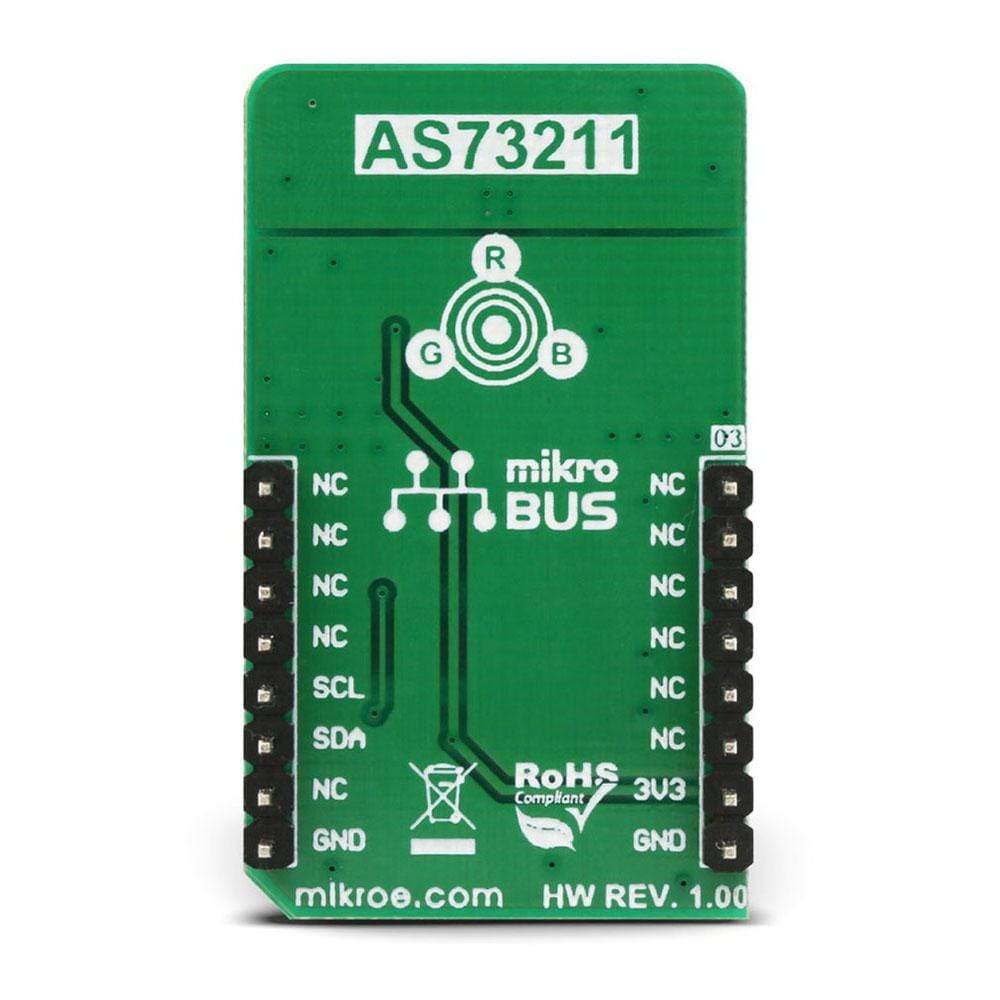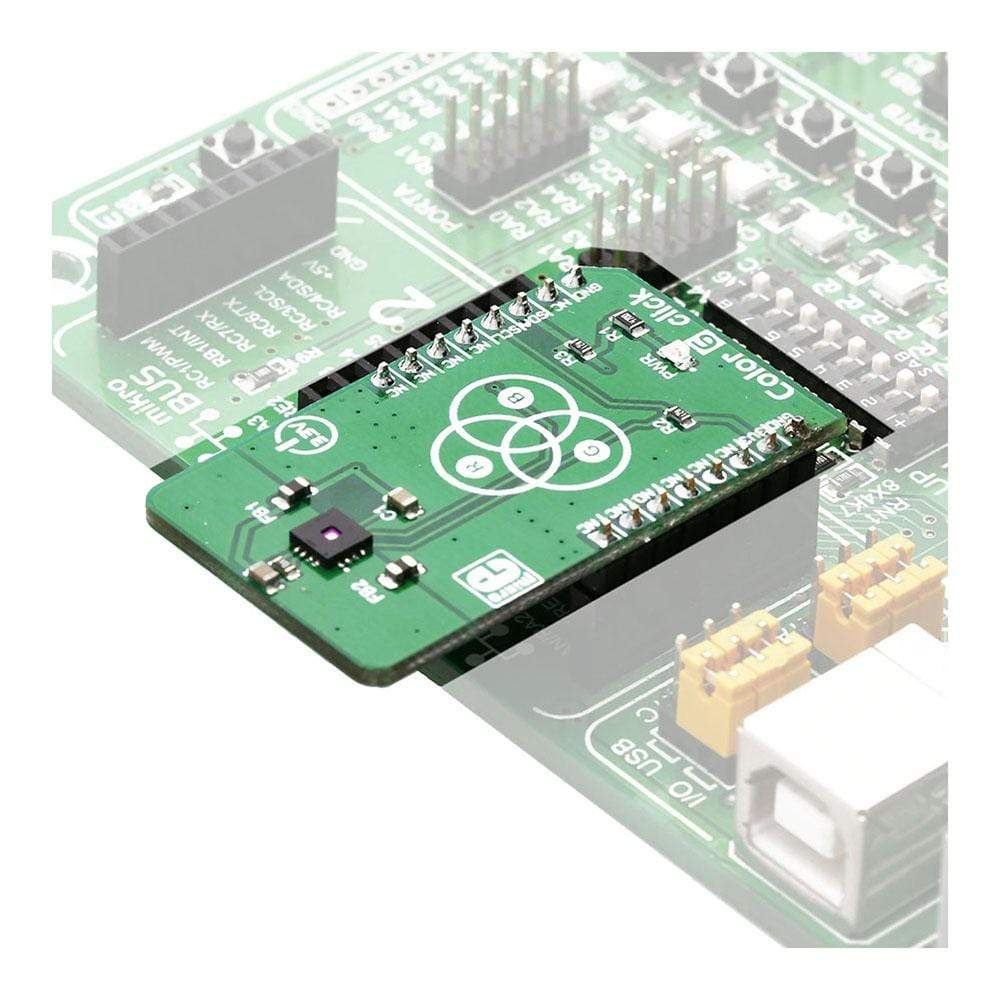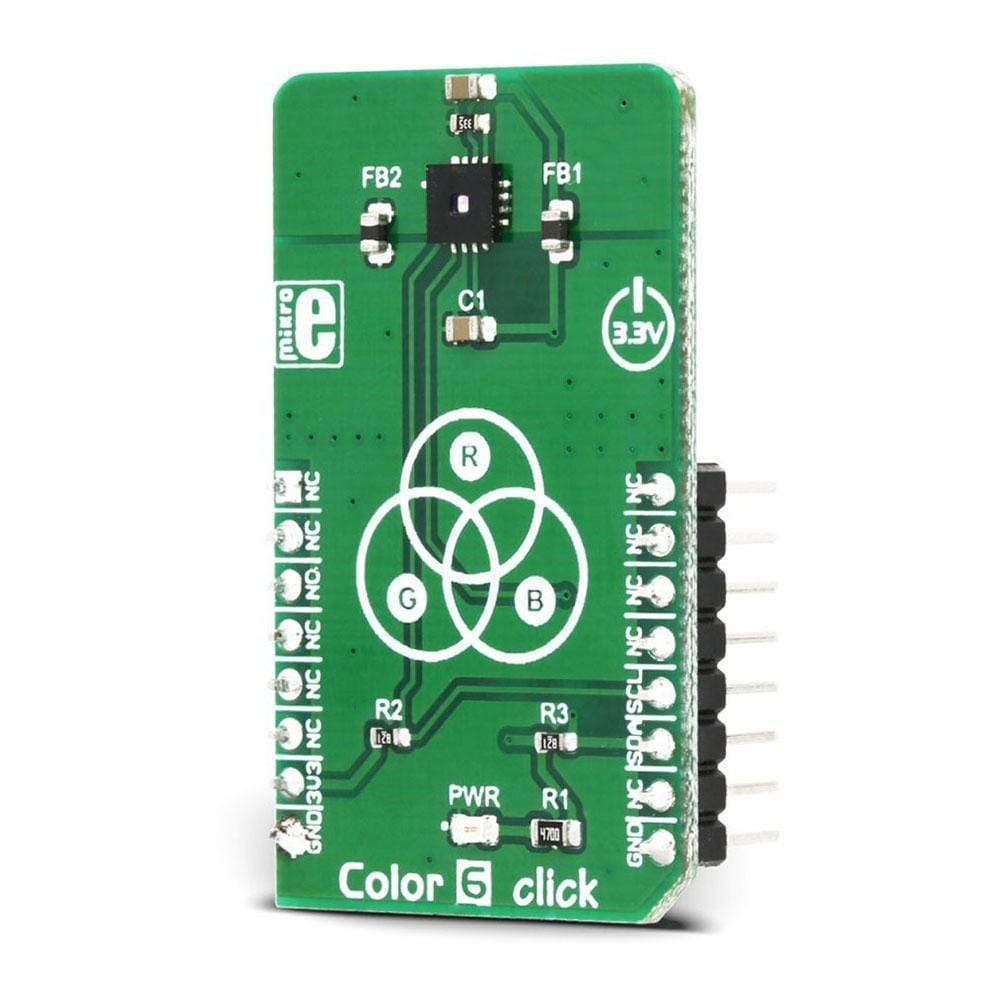
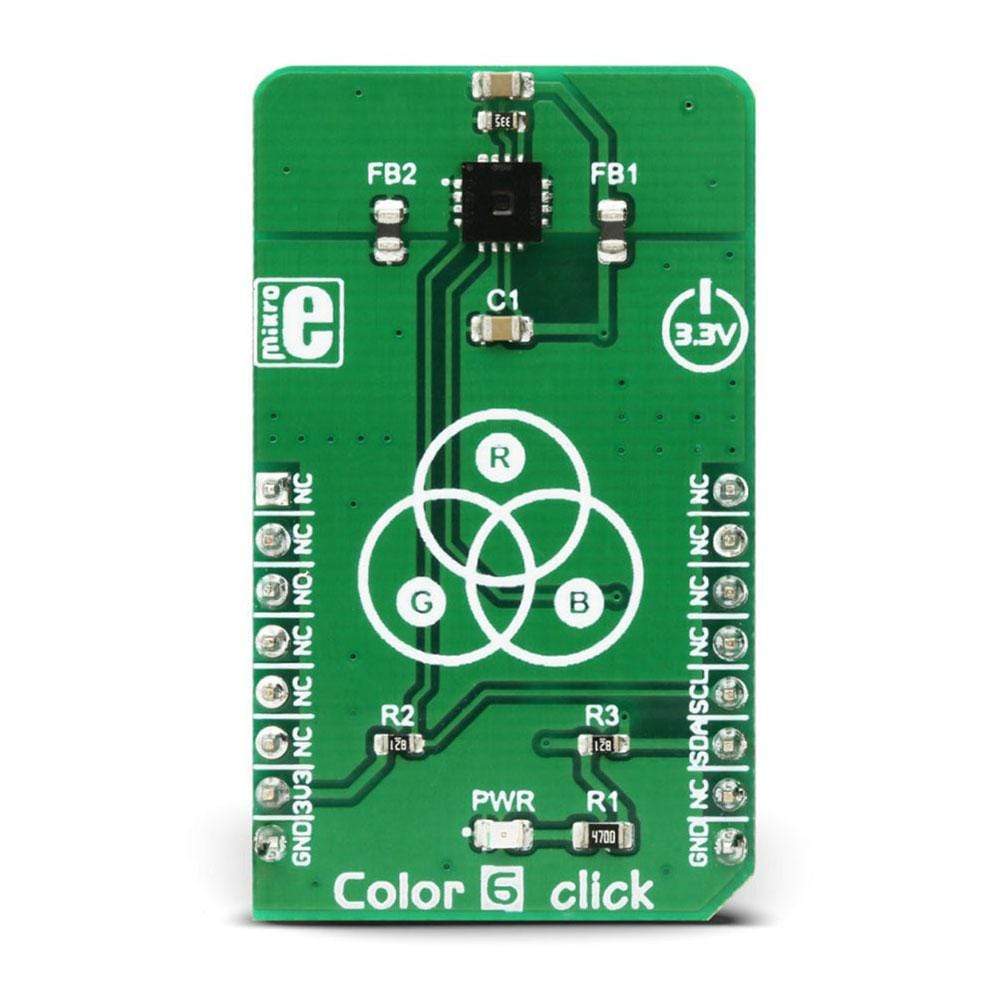
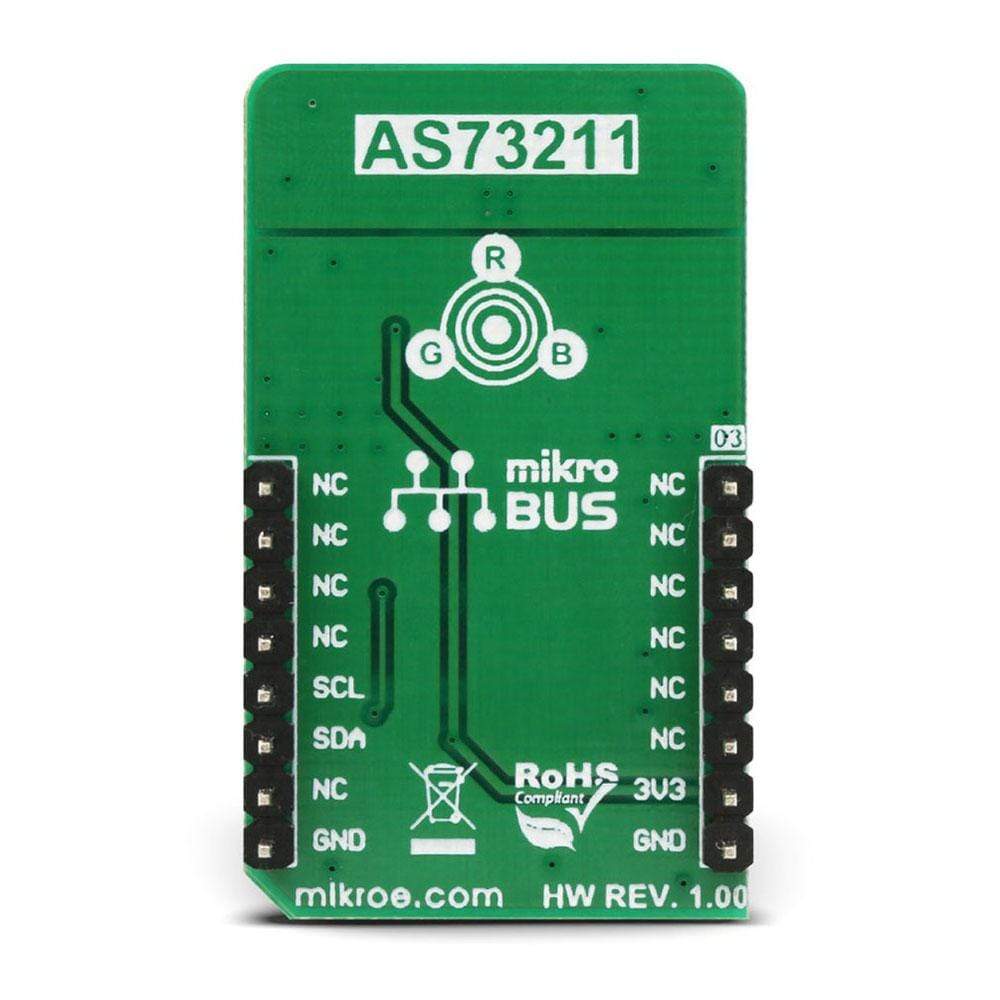
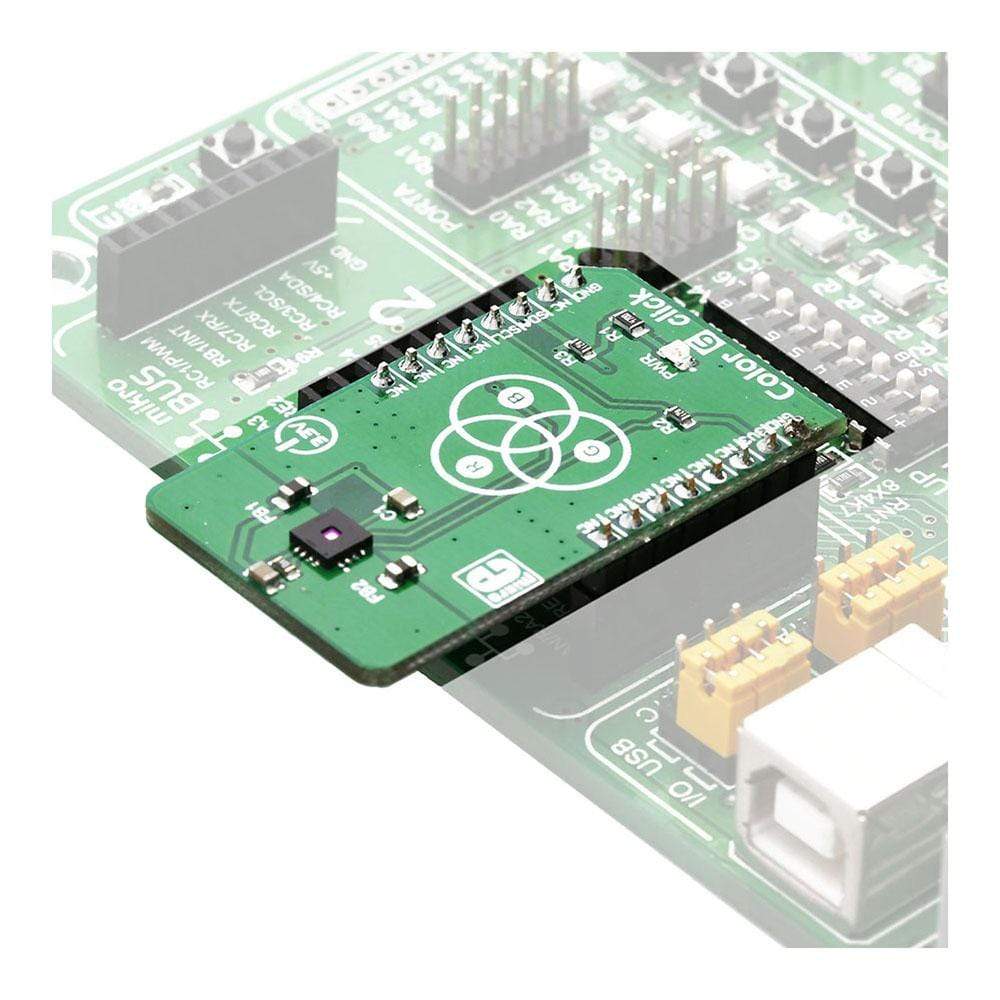
Key Features
Overview
The Color 6 Click Board™ is a very accurate colour sensing board that features the AS73211, an XYZ true colour sensor from AMS. This company has developed a proprietary JEN colour filter technology, which ensures compliance to the CIE 1931/DIN 5033 standard (human eye response), providing an accurate XYZ colour space response. The low noise 24-bit ADCs ensure the highest dynamic range available on market, with the irradiance responsiveness per countdown to 0.0005 pW/cm². This sensor offers a fast I2C interface for communication with the host MCU.
Downloads
La Color 6 Click Board™ est une carte de détection de couleurs très précise qui intègre l'AS73211, un capteur de couleurs vraies XYZ d'AMS. Cette société a développé une technologie de filtre couleur JEN exclusive, qui garantit la conformité à la norme CIE 1931/DIN 5033 (réponse de l'œil humain), offrant une réponse précise de l'espace colorimétrique XYZ. Les ADC 24 bits à faible bruit garantissent la plage dynamique la plus élevée disponible sur le marché, avec une réactivité d'irradiance par compte à rebours de 0,0005 pW/cm². Ce capteur offre une interface I2C rapide pour la communication avec le microcontrôleur hôte.
| General Information | |
|---|---|
Part Number (SKU) |
MIKROE-3061
|
Manufacturer |
|
| Physical and Mechanical | |
Weight |
0.02 kg
|
| Other | |
Country of Origin |
|
HS Code Customs Tariff code
|
|
EAN |
8606018713141
|
Warranty |
|
Frequently Asked Questions
Have a Question?
Be the first to ask a question about this.

